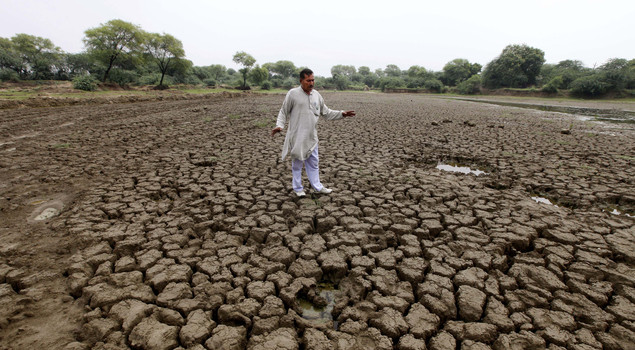For nearly two months, Satyavan Narwal's eyes scoured the heavens looking for the monsoon rains that would nourish his crops, but he found nothing and was left with parched earth. Now monsoon showers are soaking the fields — but late August is much too late for him.
This year's fickle monsoon has played havoc with millions of Indian farmers. The showers, which normally run from June to September, are crucial in a country where 60 percent of the population works in agriculture and less than half the farmland is irrigated.
"Here farming is entirely on God's mercy. If nature doesn't bless us, the farmer can't do anything," Narwal says.Meanwhile, farmers lament the lack of government investment in irrigation and other infrastructure that could protect farmers from the vagaries of the monsoon.
India's Meteorological Department has said it expects the country to get at least 10 percent less rain this year than during a normal monsoon, but large parts of the country have been hit much harder.
In the northwestern state of Haryana, where Narwal's family has farmed for generations, rainfall is less than half what it should have been. And when the rains finally did come, the crops were already nearly dead, fit only to be used as animal feed.
Shriveled old men share a water pipe and one of them points to the skies and shouts "What now, brother?" as they watch men and women carry damaged sugar cane to feed to their cattle. At the edge of fields, young men stand, hands on hips, shaking their heads in dismay. The village is 140 kilometers (87 miles) northwest of New Delhi.
By now the sugar cane crop should have been at least eight feet tall (2.4 meters tall). Rice paddy crops would have been lush and emerald green. Small patches of pearl millet, corn and sorghum would have dotted the landscape.
But the sun shone on with determination through all of July and most of August so that the cane is now only knee-high at best and most of the rice crop is burnt.
The lack of monsoon rains has also been partly to blame for the worst blackout in world history, which cut power to half of India last month. Large-scale farmers were using extra power to pump water from deep aquifers, and little electricity was being generated by hydropower projects. More
